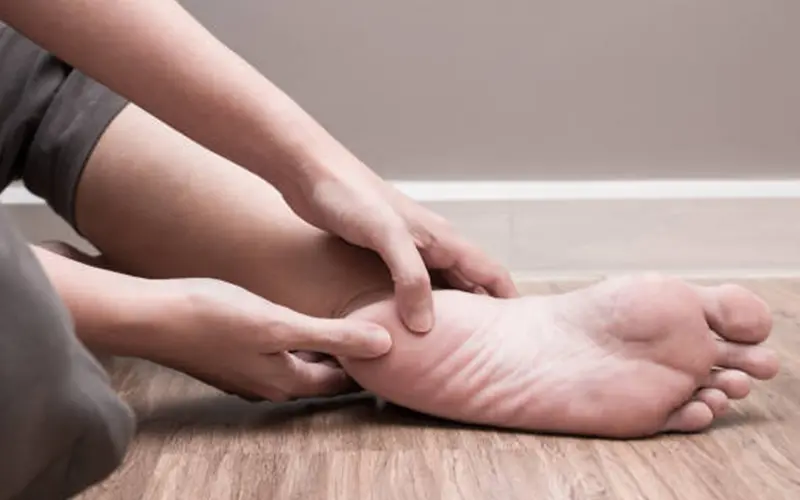Heel Spurs

What is a Heel Spur?
A heel spur diagnosis is made when an X-ray shows a bony protrusion of bone on the bottom of the foot, typically where the plantar fascia is attached to the heel bone. Once your Podiatrist has made an accurate diagnosis of the cause of pain and inflammation, they will decide on the most appropriate form of treatment for your case in particular.
Heel Spurs and Bone Spurs
Each of your feet (and ankles) is controlled by 26 bones. Out of these, the largest one is the calcaneus (heel bone). Due to its position as the lowest point directly underneath the rest of the body, this bone absorbs tremendous amounts of pressure, even during the course of an average day. The calcaneus is able to handle the stress, but excessive amounts of pressure can result in a heel spur.
Bone spurs, including those that develop on the heel, are formed by calcium deposits the body makes on an existing bone. The purpose of this is to be a protective defense against persistent force or pressure. Over time, the built up calcium deposits become an observable bump on or along the edge of a bone. Besides forces like stress and pressure, bone spurs are sometimes created by the body while it repairs tissue loss due to osteoporosis.
The boney protrusions are not painful and do not possess symptoms on their own. This means it is completely possible for you to develop a bone spur and not even be aware of it. However, when they press into soft tissues, problems can arise. Such is the case with some heel spurs.
Heel spurs will usually form on the underside or back of the heel. These are the locations where the plantar fascia and Achilles tendon anchor to the heel bone. When these tissues persistently tug on the bone, the body begins initiating the calcium-depositing process and a spur develops. Spurs can extend up to roughly half an inch and contribute to the pain you may experience from plantar fasciitis or Achilles tendinitis.
Heel spurs are commonly associated with plantar fasciitis, (the most common cause of heel pain for adults). Running and high-impact activities (like basketball and tennis) increase the risk for both plantar fasciitis and heel spurs.
When these spurs cause inflammation in soft tissues, it can be rather painful. The pain can either be chronic (consistent) or intermittent (periodic), depending on various factors. Much like the symptoms of plantar fasciitis, heel spur pain is often most severe with the first steps following a night’s sleep. It can become progressively better during the day as the fascia loosens. However, the sharp pain can return at any point, following extended periods of rest or inactivity.
Heel Spur Prevention and Treatment
Some of the preventative measures you should take to reduce your odds of developing this condition include choosing footwear that fits correctly, wearing appropriate shoes for the activities you engage in, warming up and stretching prior to physical activities, and gradually easing into new exercise and workout routines.
Nonsurgical care is effective for about ninety-percent of heel spur cases. Treatment includes:
- Orthotic devices and shoe inserts
- Physical therapy
- Laser therapy
- Shoe modifications or changes
- Strapping or taping feet
- Stretching
These methods are effective for most cases, but it is sometimes necessary to either release tension on the fascia or remove a heel spur through surgery.
Our goal is to find a successful resolution to lower limb issues with conservative care, and we will explore these options first.
However, if surgery is needed, you can take comfort in the fact that we are staffed with the surgical experts you need to perform your procedure.

Contact one of our Upperline Health convenient clinics to get your Heel Spurs treatment started.
